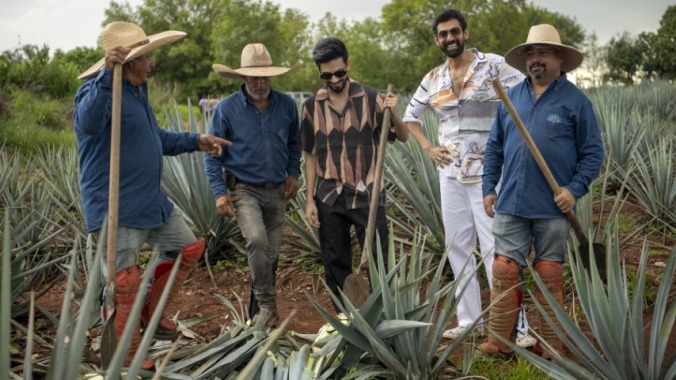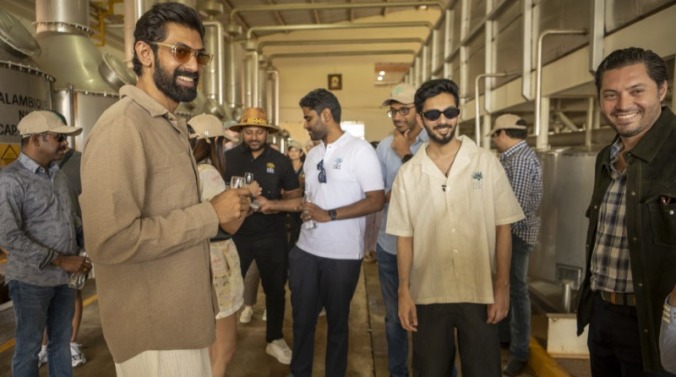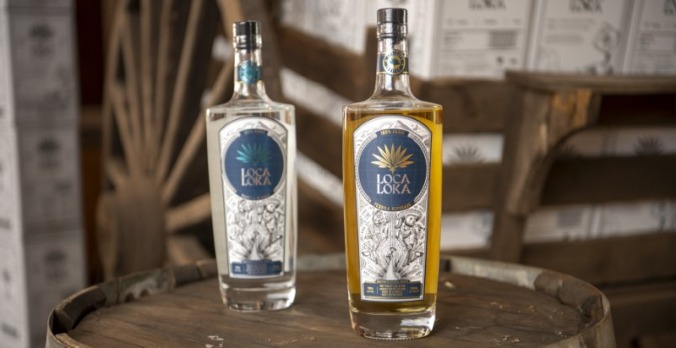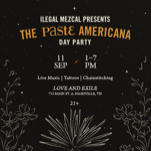Fusing Mexican and Indian Drinking Culture With Loca Loka Tequila
Photos via Loca Loka Tequila
As a country, India is now the world’s single most populous entity, overtaking China in 2022 to register more than 1.44 billion people. And although Indians by and large don’t consume anywhere near the same amount of alcohol per capita as the residents of Europe or the Americas, they definitely do drink–and their tastes as consumers are maturing and expanding to incorporate more global spirits and cocktail influences. That trend, and the sheer size of the relatively untapped market, spells potential opportunity for the savvy Indian businessman who can bring the first prominent, Indian-fronted agave spirit to the forefront of the country’s alcohol culture. And that brand just might be Loca Loka Tequila.
Loca Loka Tequila is the brainchild of a heavy-hitting Indian cultural triumvirate: Tollywood film megastar Rana Daggubati, hybrid composer/pop star Anirudh Ravichander, and entrepreneur Harsha Vadlamudi. Between them? About 15 million Instagram followers, and a blend of business startup and global entertainment experience. They envision Loca Loka as a cultural fusion project, having identified Mexico as a kind of kindred spirit to their nation, and designed Loca Loka around this conceptual meeting point. Even the labels for the new tequila line (blanco and reposado, so far) make this immediately clear: Peacocks, tigers and mariachi bears represent symbols of each place coming together.
“I don’t think there has ever really been an indigenous tequila brand from India,” said Rana Daggubati, sitting down for a conversation on the new spirit at the place of its origin, Hacienda El Mexicano in Arandas, Mexico. “So we are probably the first to do it. Maybe even the first actual Indian tequila brand. The fun part here is that it’s actually two cultures we’re trying to fuse in some manner. Indian and Mexican cultures are so close, they are both ancient and celebratory. They’re far apart geographically, but so close in their values. Tequila was the obvious way to bring them together.”
Anirudh Ravichander perhaps stands in as a representative of the modern, hip, urban drinker in India, the type of alcohol consumer that Loca Loka–which fuses the Spanish word for “crazy” and Sanskrit word for “world”–will be trying to connect with. His own social circle was used in focus testing potential expressions of the tequila, and he notes that the earliest experiments didn’t actually go over as well as he was expecting. Gathering more opinions and persistent sampling, though, eventually led to the discovery of a product that excited more of their palates.
“I think tequila is catching up quickly in India now,” Ravichander said. “Just to get a sense of it, my own group of friends had never really touched tequila until two or three years ago, and now many are hardcore tequila fans. So I think there’s the start of a movement happening now, and we wanted to be the first authentic Indian tequila brand. I think we’re onto something good here.”

That ideal spirit was ultimately the one they discovered in Arandas, a small city of the Jaliscan highlands, about 100 kilometers east of Guadalajara. Hacienda El Mexicano is NOM 1588 in agave geek terminology, a pastoral and impressive structure that sits on a hill above its rows of agave fields, where chittering flocks of barn swallows weave and dip among the plants to catch insects on the wing. Like most tequila distilleries in Jalisco, each of which is designated with a NOM number, Hacienda El Mexicano produces a wide array of distillates for various companies, producing brands such as Dos Artes and Mala Vida, though they’re perhaps best known for their well-regarded house brand, El Mexicano. They employ a variety of techniques both traditional and decidedly more modern, including both brick ovens and (low pressure) autoclave to bake agave piñas and extract their fermentable sugars. Perhaps the distillery’s most unconventional aspect, though, is their widespread use of newly charred American and French oak barrels for aging their spirit, rather than the much more commonly widespread use of reused American bourbon casks. This was just one of the aspects that stood out to the Loca Loka team in the midst of their search for the correct partner.
“We went to almost 10 distilleries, looking for the right fit,” said Harsha Vadlamudi. “We tried all the profiles. This distillery, the family was similar to our age bracket, and they understood the branding and the seriousness behind it. For them, there are too many people asking them to make new brands for them every day. They want to work with people who share their values. And when you look at how they operate, their family is involved, the children are involved, the grandchildren are involved. This is what an Indian family would do. It’s a proper fusion of cultures. It ultimately took us almost a year to do the profiling, the taste panels, and there were a few data points we were looking at like what the consumers in India were liking, and what the Indian diaspora in America was liking.”
Of course, with such ambitions for eventual widespread launches, first in the United States market and then eventually in India, comes the need for concurrent education of those prospective consumers. Vadlamudi describes an Indian drinking culture that can still often see tequila as a spirit for consuming in shots, or in omnipresent cocktails like the margarita, but Loca Loka will be trying to build more enthusiasm for higher-end cocktail recipes that truly fuse elements such as Mexican and Indian flavors. Enjoying a dinner at the distillery in Arandas, members of the founding team enjoyed prospective cocktails in this mold, with examples such as a reposado-based cocktail incorporating Mexican piloncillo sugar and Indian chai. Daggubati and Ravichander, meanwhile, speak of using their industry connections and lifestyle to sneak samples of Loca Loka into parties and industry events, seeking opinions from other members of the Indian entertainment scene with good taste in high-end spirits. Both seem quite earnestly passionate about building something that really appeals to their home market.
One question, of course, remains: How is the tequila? I had a chance to try both expressions while visiting the distillery, both of which will aim to carve out a place in the agave spirits midshelf in the U.S., with MSRPs of $46 for the blanco and $55 for the reposado. Here are some tasting notes on each.

Loca Loka Tequila Blanco: The flagship of the Loca Loka line is bottled at the typical entry point of 40% ABV (80 proof) for the U.S. market, and is made from autoclave-cooked highland agave, fermented with a hybrid white wine yeast and double distilled in stainless steel pot stills.
On the nose, this one registers character that is both fresh and sweetly cooked in tone, with expressive roasted agave sweetness, but a brighter undercurrent as well of mint and a slightly menthol-like cooling characteristic. The nose also features a lemon-lime type citrus profile, pronounced salinity and pink peppercorn-like spice, though it leans fairly sweet overall. On the palate, this becomes more peppery overall, with plenty of sweet cooked agave but also layers of spice nuance, especially evoking something like cardamom, with subtle vanilla as well. Ethanol heat is low, and it drinks very easily, but at the same time this is notably more robust in flavor than a lot of comparable 80 proof tequila on the shelf in the U.S.
Loca Loka Tequila Reposado: Loca Loka’s reposado is, in the style of Hacienda El Mexicano, aged for a couple of months in newly charred American and French oak casks, which we would expect to contribute pretty vibrant, wood-driven character, given that most comparable reposado is being aged in used barrels. Like the Blanco, it weighs in at 40% ABV (80 proof), this time with a $55 MSRP.
Nosing the reposado, I was surprised to find that the oak presence here is actually significantly more on the subtle side than I had anticipated or assumed that it would be. It offers light toffee on the nose, evolving the sweet cooked agave aromatic with more pink peppercorn spice and a citrus nose that feels more evocative now of clementine orange slices. On the palate, this one offers very gentle caramel and increased vanilla presence, along with orange citrus and hints of cinnamon and cardamom. The overall evolution is on the subtle side, rather than the dramatic departure that I expected it might be.
It is likely, perhaps, that the shorter period this spends in the cask is intended to largely preserve the character of the Blanco, and that the still-in-development anejo expression from Loca Loka will offer a far bigger transformation of the overall profile. Other extra-aged tequilas I sampled from Hacienda El Mexicano during the visit suggest that this will be the case, as spirit that had spent a year or more in these barrels was absolutely bursting with wood spice character from the French oak in particular. Overall, though, this is still a pretty subtle and composed reposado.
In the closing months of 2024, Loca Loka will be arriving on U.S. store shelves for the first time, as Daggubati and Vadlamudi work on tequila education in their native India and Ravichander tours his music abroad, building awareness of the new brand. Together, they dream of harnessing the support of Indian Americans to make Loca Loka into a force to be reckoned with, first in a niche and then in a nation of 1.44 billion people. There are obvious challenges standing in the trio’s way, but after seeing the dedication they’ve displayed to crafting a tequila that speaks to their global fusion goals, I wouldn’t be at all surprised to see Loca Loka Tequila become the industry’s hottest new brand in 2025.
Jim Vorel is a Paste staff writer and resident brown liquor geek. You can follow him on Twitter for more drink writing.






































